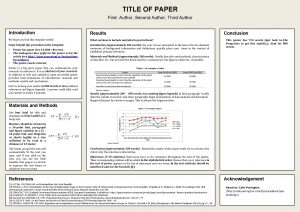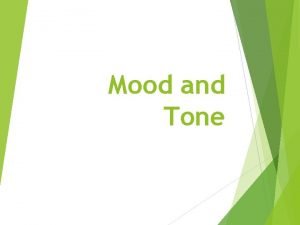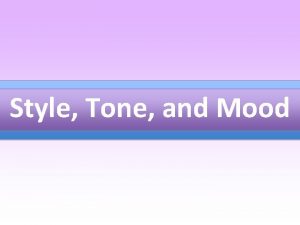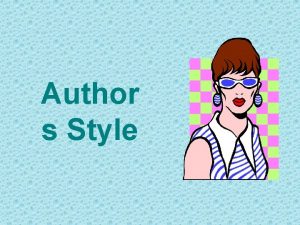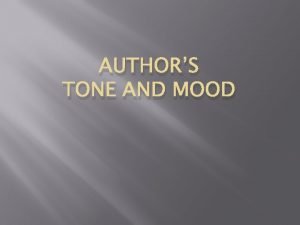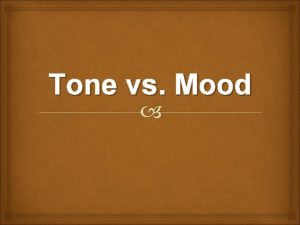STYLE AND TONE WHAT IS STYLE Every author









- Slides: 9

STYLE AND TONE

WHAT IS STYLE ? Every author has his or her own style – that is, each author uses literary devices, tone, and mood in a particular way that makes his or her writing recognizable. When you read several books by the same author, you become accustomed to the author’s style of writing and sometimes you look for authors with a similar style.

John Green’s style of writing is full of sarcasm, humor, and depth “Without pain, how could we know joy? ' This is an old argument in the field of thinking about suffering and its stupidity and lack of sophistication could be plumbed for centuries but suffice it to say that the existence of broccoli does not, in any way, affect the taste of chocolate. ” ― John Green, The Fault in Our Stars “’You spend your whole life stuck in the labyrinth thinking about how you’ll escape it one day, and how awesome it will be, and imagining that future keeps you going, but you never do it. You just use the future to escape the present. ” ― John Green, Looking For Alaska

STYLE is the way the author uses words, phrases, and sentences. The author’s 1) personal word choice/vocabulary, 2) types of sentences, 3) point of view from which the text is told, 4) organization of the text. These 4 components will reveal his/her style.

STYLE When analyzing style, you must look at a piece of writing FROM the overall structure of the text TO the small details and word choices. Be an editor, a critic, to answer the question: how would I describe this author’s writing style?

STYLE Descriptive? Thoroughly-developed? Academic? Formal? Informal? Business-like? Personal?

TONE is simply the author’s attitude toward the subject. You can recognize the tone/attitude by the language/word choices the author uses. His language will reveal his perspective/opinion (that is, whether it is positive/negative) about the subject. Tone must be inferred through the use of descriptive words.

TONE Identifying the TONE is all about knowing the definitions of many descriptive vocabulary words. Without this large vocabulary, it’s difficult to describe outside of “good” and “bad. ”

HOW TO DETERMINE TONE Use the acronym DIDLS to help you remember those elements of tone that can be analyzed when voice is absent. Diction: the connotation of the word choice Imagery: vivid appeals use to understand through the senses Details: Specific facts that are included or omitted Language: overall choice or language (formal, informal, slang, jargon, etc) Syntax: sentence structure and order
 First author second author third author
First author second author third author Every nation and every country
Every nation and every country Microsoft's mission statement
Microsoft's mission statement Every nation and every country
Every nation and every country Every picture has a story and every story has a moment
Every picture has a story and every story has a moment Every knee shall bow every tongue confess
Every knee shall bow every tongue confess Every rotarian every year
Every rotarian every year Every child every day
Every child every day What is tone mood and purpose
What is tone mood and purpose Purpose and tone
Purpose and tone
